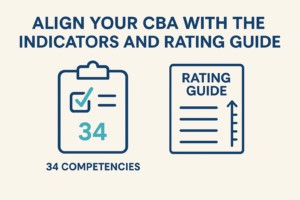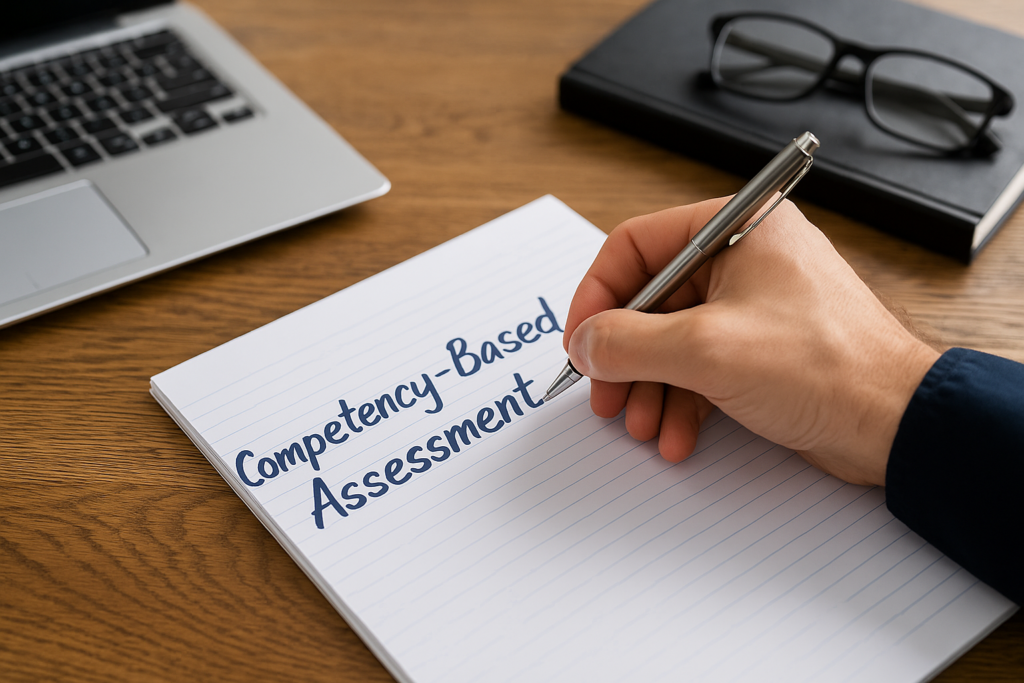If you’re an engineering applicant aiming for your P.Eng. license in Canada, writing your Competency-Based Assessment (CBA) effectively is one of the most critical steps in your licensing journey. The CBA process not only validates your experience but also demonstrates your readiness for independent professional practice. Submitting a well-structured and compelling CBA can set you apart and accelerate your path to licensure. In this guide, we’ll share 7 powerful tips to write CBA effectively, align your experience with required competencies, and ensure your submission meets assessor expectations.
Understand the CBA Framework Before You Write
Before drafting your CBA, it’s essential to understand the structure and purpose of the competency-based model. The Professional Engineers Ontario (PEO) CBA framework assesses applicants across 34 competencies, grouped into seven categories:
- Technical Competence
- Communication
- Project and Financial Management
- Team Effectiveness
- Professional Accountability
- Social, Economic, Environmental, and Sustainability
- Personal Continuing Professional Development
Each competency requires a minimum rating based on a five-point scale. Professional standards competencies often require higher minimum ratings (2 or 3), reflecting their importance in ensuring safe, ethical engineering practice.
Understanding this structure helps you select examples and draft narratives that align directly with what assessors need to see. This foundation is non-negotiable—it’s the blueprint for your submission.
Choose the Right Work Examples for Your CBA
One of the most strategic steps in learning how to write CBA effectively is choosing work examples that strongly align with the competencies. Each example should clearly demonstrate how you applied engineering principles in real-world situations, ideally with increasing levels of responsibility.
Tips for choosing effective examples:
- Relevance over recency: Prioritize impactful experiences that directly reflect the required competencies, even if they aren’t the most recent.
- Diversity: Avoid using the same project for multiple competencies unless absolutely necessary. Showing a range of experiences across roles, industries, or countries reflects depth and adaptability.
- Complexity and ownership: Choose examples where your role was significant. Assessors are looking for leadership, independent judgment, and problem-solving.
Remember, every example you submit should tell a unique story that complements your overall experience portfolio.
Use the Situation-Action-Outcome (SAO) Method
PEO assessors are trained to review submissions using a structured lens. The best way to write your CBA effectively is by following the Situation-Action-Outcome (SAO) method.
Breakdown of SAO:
- Situation: Set the stage. What was the context of the project or task? What problem were you trying to solve?
- Action: Detail what you personally did. This section should be the most detailed, highlighting your decisions, methods, and engineering knowledge.
- Outcome: Describe the results. Quantify impacts if possible (e.g., improved efficiency by 15%, saved $50,000, mitigated risk, etc.).
Example:
- Situation: “During my time at XYZ Corp, our team was assigned to upgrade a failing HVAC system.”
- Action: “I led the load calculations, selected new components, and coordinated with vendors to ensure code compliance.”
- Outcome: “The final design improved energy efficiency by 25% and was completed 10% under budget.”
Using this method keeps your example focused, structured, and easy to assess.
Align Your CBA with the Indicators and Rating Guide
Each competency comes with defined indicators outlining what assessors expect. Ignoring these indicators is one of the most common reasons CBA submissions are rated poorly.

For example, Competency 1.1 (knowledge of codes and standards) includes indicators such as:
- Identifying and complying with legal and regulatory requirements
- Preparing reports gauging compliance
- Using local or international standards depending on the jurisdiction
Your example should reflect at least 2–3 of these indicators to demonstrate competence.
Additionally, familiarize yourself with the rating level descriptions:
- A rating of 3 typically means you worked mostly independently on tasks of moderate complexity.
- A rating of 4 or 5 suggests minimal supervision and highly complex tasks.
Understanding how these ratings are interpreted will help you shape examples that meet or exceed the expected thresholds.
Make Your Role Clear in Each Example
CBA assessors want to know what you did, not your team. Ambiguity or excessive use of “we” or “our team” weakens your submission.
Tips to emphasize your role:
- Use “I” statements consistently
- Highlight your decision-making and problem-solving process
- Describe how you applied engineering principles independently
For instance, instead of saying, “We evaluated safety compliance,” say, “I conducted a compliance audit against CSA standards and recommended design changes to reduce risk.”
This shows assessors that you had a direct and measurable impact, which is essential for higher ratings.
Strengthen Your Submission with Validator Insights
Your validators play a crucial role in confirming your experience. Choose professionals who can objectively verify your claims and who understand the technical and managerial context of your work.
How to leverage validator input:
- Choose wisely: Prioritize supervisors or senior colleagues familiar with your contributions.
- Brief them: Ensure they understand the CBA process and your role in each example.
- No double-assigning: Only one validator per competency.
Strong validator comments can reinforce your claims and help assessors make a favorable judgment. PEO assessors view validator input as supporting evidence but not a substitute for your own narrative.
Review and Refine Your Language for CBA Effectiveness
The clarity and tone of your writing can significantly affect how your submission is received. Assessors have a limited time per file, so clarity, conciseness, and relevance are essential.
Refinement checklist:
- Avoid jargon: Use industry-standard terminology, but avoid acronyms or slang without explanation.
- Stay on-topic: Don’t drift into unrelated project details. Stay laser-focused on the competency.
- Edit ruthlessly: Use grammar tools and get peer reviews. CBA Pro, CertNova’s AI assistant, is built specifically for this purpose and provides structured feedback.
Consider each word a building block of your professional credibility. Make it count.
Common Mistakes to Avoid When You Write CBA
Even experienced professionals fall into common traps. Here are some to avoid:
- Repeating the same example across multiple competencies without customization
- Writing too vaguely, failing to demonstrate your specific contributions
- Ignoring the minimum rating expectations, especially for professional standards competencies
- Neglecting social, ethical, or environmental impacts when they’re relevant
- Submitting examples without validator confirmation, which will delay your process
A checklist before final submission can help avoid these issues and increase your chances of approval.
Conclusion: Master the Art of Writing CBA Effectively
Writing your CBA effectively is not just about ticking boxes—it’s about telling a professional story that proves you’re ready for licensure. By understanding the CBA framework, choosing strategic work examples, using the SAO structure, aligning with indicators, and writing clearly, you’ll be in a strong position to succeed.
Remember, tools like CBA Pro from CertNova can significantly streamline your preparation, helping you track gaps, match experiences to competencies, and refine your writing. Licensure is more than an administrative hurdle—it’s your gateway to full professional autonomy.
Take the process seriously, write with intent, and let your engineering journey shine through every example you submit.
Ready to Start Your CBA Journey?
Let CertNova help you every step of the way. Start with our CBA Intake Form to get matched with the right tools and support!


